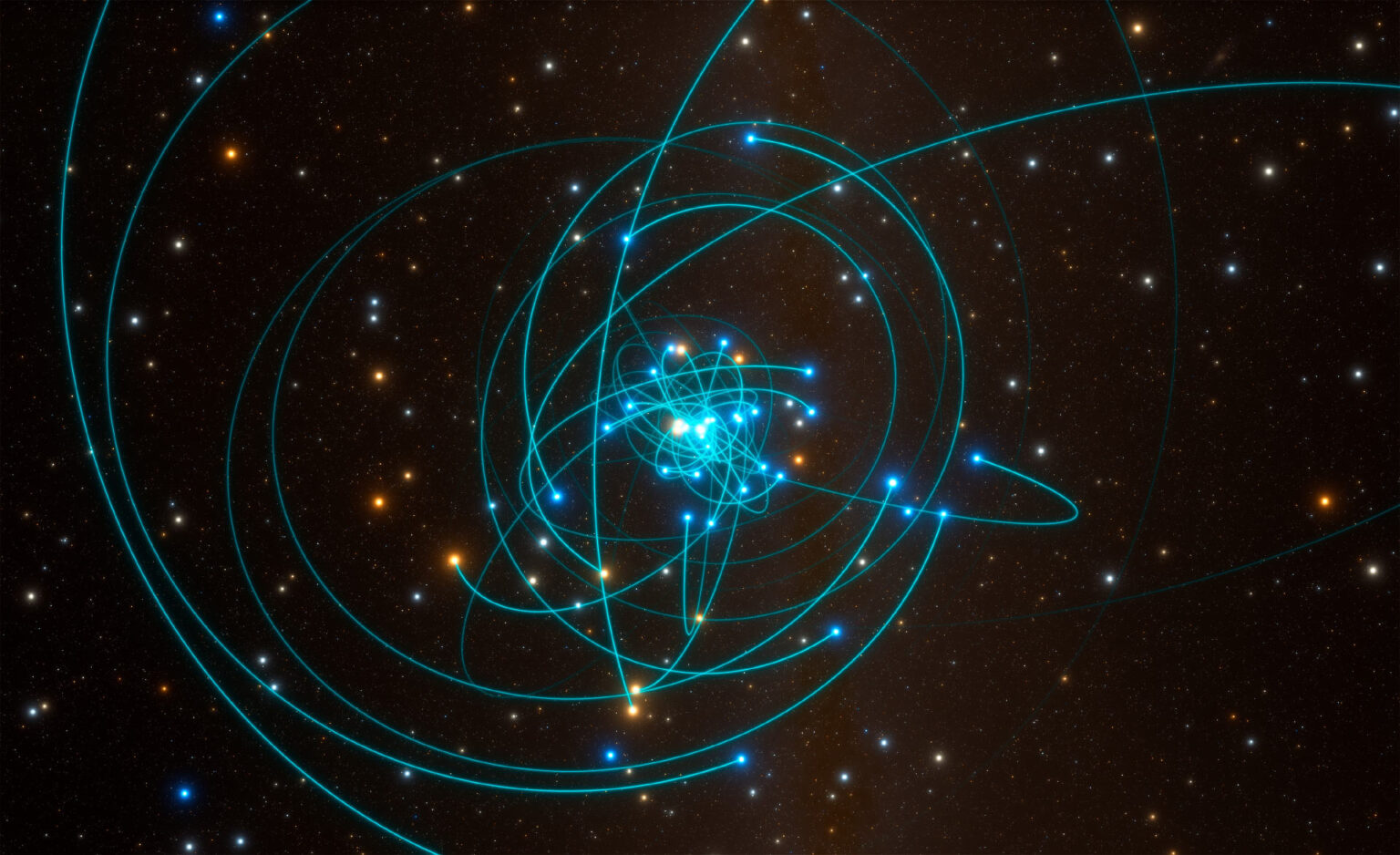Scientists have modeled the motion of 27 stars that orbit in the center of the Milky Way around the supermassive black hole Sagittarius A*. However, their orbits turn out to be so chaotic that even modern calculation methods do not allow scientists to indicate where they will be in 462 years.

Chaotic movement of stars
Three astronomers from the UK and the Netherlands have published a study in which they prove that modern methods of calculating orbits are not able to provide for the exact position of stars in the center of the Milky Way for a long time. They analyzed the motion of 27 luminaries orbiting the black hole Sagittarius A* and came to the conclusion that their orbits were too chaotic for this.
All this is connected not only with relativistic effects that occur near the singularity, but also with the well-known three-body problem. For many centuries, the problem of the gravitational interaction of more than two objects in space has driven scientists to a dead end.
The fact is that with such interaction, chaos and uncertainties arise every second, which can greatly change the trajectory of one or more objects. Thus, in this case, it will not be possible to create equations describing the movement of bodies for centuries to come.
Why is it impossible to predict the position of the stars
However, when the researchers tried to apply modern calculation tools to the 27 stars orbiting Sagittarius A*, they were met with a complete fiasco. They ran a simulation to predict their position over the next 10 thousand years. However, it turns out that the behavior of these objects becomes unpredictable after 462 years.
The fact that proven methods gave such a result surprised scientists very much. Of course, the Solar System is 20 thousand times smaller than predicted, and the mass of the eight major planets in general is a millionth of what the stars weigh. However, no one expected that it would make such a big difference.
Every time two or three stars interacted with each other, their orbits changed chaotically. This caused a completely new character of their interaction with the black hole. The reason for this was fluctuations that occurred at almost every point of the orbit and, at first glance, were insignificant, but when zoomed in, they reached 40 au.
In order to describe all of the above, researchers have coined the term “punctuated chaos”. In evolutionary biology, there is a concept of “punctuated equilibrium”, which consists in the fact that most of the time species of living organisms are at relative rest and only after gaining a certain number of mutations evolve abruptly.
In the case of stars orbiting a black hole, the opposite happens. They are in a state of chaos all the time and only come out of it for a short period when the orbit changes. Researchers believe that in the future they will be able to understand the logic of this process and calculate the orbits of stars better.
According to phys.org
Follow us on Twitter to get the most interesting space news in time
https://twitter.com/ust_magazine

